Your cart is currently empty!
Digital products ! make you rich

In recent years, a new concept of products, known as digital products, has gained widespread popularity. Bill Gates, the founder of Microsoft, emphasizes the importance of having an online business, stating, “If you don’t have an online business, you don’t really have any business in the future.”
Today, as the world transforms into a small village accessible through the internet, owning an online business has become essential. It is expected to host all major projects in the future. Digital products represent one form of online business, and their market continues to grow due to numerous advantages that set them apart from tangible products.
So, what are digital products? What types and benefits do they offer? How can one create and sell these products? This article provides comprehensive answers to all your questions about this topic.
Table of Contents
ToggleWhat are digital products?
Digital products are items that we use and interact with through computers, mobile phones, and other electronic devices. Unlike tangible products, they are not physical or touchable. Examples of digital products include mobile applications, computer software, platforms, and online courses.
What is the difference between digital products and tangible products?
Tangible products encompass all types of goods with physical properties that can be touched by hand. These have been known to humanity since its existence and include food, beverages, clothing, and more. On the other hand, digital products represent a new type that emerged in the era of digital evolution, drawing advantages from technology, such as speed, ease, and overcoming geographical boundaries.
Types of Digital Products
Digital products come in various types and forms, ranging from simple creations that can be easily crafted with minimal expertise, such as basic designs and templates, to more complex ones requiring advanced skills and collaborative efforts, like applications and sophisticated software. Another type, originating from tangible products but transformable into digital form, includes items like e-books and online courses. Here are five fundamental types of digital products:
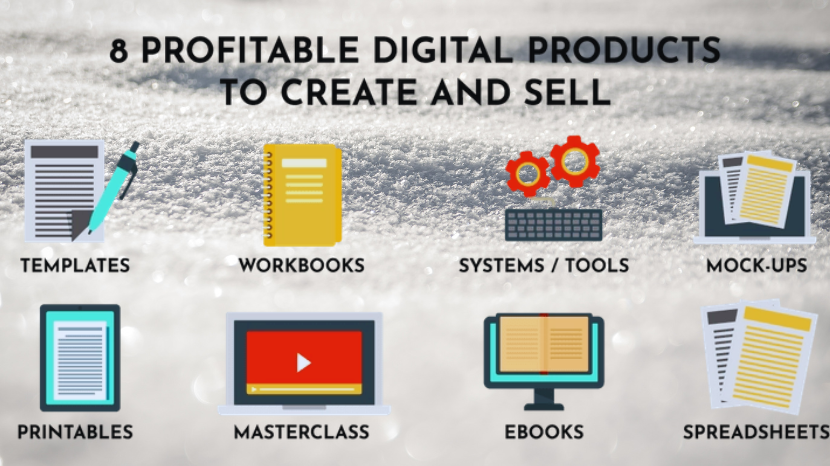
1. Templates
Templates serve as an excellent option for those looking to develop a website, whether for creating a platform, blog, online store, or other purposes. They streamline significant efforts in website design, assist in user experience design, and help prevent potential errors. Examples of templates that can be created and sold include:
- WordPress templates.
- WooCommerce templates.
- Magento templates.
- HTML templates.
2. Designs
Designs encompass a wide spectrum of types and forms, including user interface (UI) design beneficial for website owners and e-commerce stores. Additionally, graphic designs, social media platform designs, brochure designs, business card designs, menu designs for restaurants, and more fall under this category. These designs can be created and sold as a type of digital product.
3. Web and Mobile Applications
Among other sellable digital products are applications and software, whether mobile applications or software systems operating on computers or the web. This type of product demands high expertise in programming languages and may require a dedicated team, depending on the complexity of the application or software.
4. E-Books
In the past, authors spent months writing a book, incurring costs for printing and publishing, only to be sold to readers with a predefined profit margin. Today, with the option to sell books electronically, authors are spared the expenses of printing and distribution. A click of a button is all it takes for the book to reach the reader, benefiting both the reader and the author.
5. Online Courses
Digital products also include online courses, offering a versatile and accessible form of education. Covering various subjects and skills, online courses are created by experts in the field and provide a convenient learning experience for participants.
Advantages of Digital Products
Digital products possess numerous advantages, evidenced by the tremendous growth in the digital products market. Here are four essential features that characterize digital products:
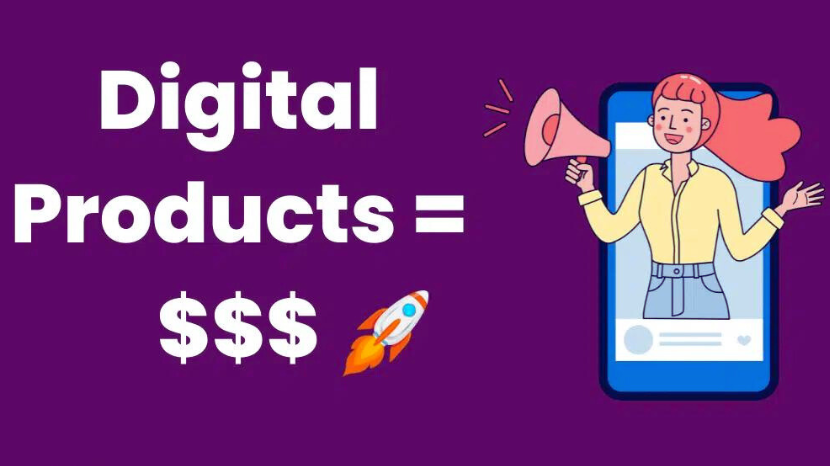
1. Low Creation Costs
Many individuals have unique business ideas, but the primary obstacle to initiating these projects often lies in the lack of financial resources. Traditional projects may be abandoned due to the high costs of creation. Digital products, on the other hand, stand out because they require no substantial financial resources. The real capital for digital products lies in your skills and expertise.
2. Unlimited Recurring Sales
One of the significant advantages of digital products is their inexhaustibility. They can be sold repeatedly to different customers without depletion or deterioration. Moreover, modifications and enhancements can be made, unlike tangible products that require specific financial resources for manufacturing and are sold at a higher price, including a one-time profit margin.
3. Access to a Wide Customer Base
The internet allows you to sell your digital products globally without incurring additional shipping or storage costs. The vast online market encompasses diverse social levels, enabling you to target potential customers interested in your product.
4. Continuous Passive Income
Imagine waking up in the morning to find that you’ve earned profits while sleeping or enjoying a vacation with a steady flow of income. This is the reality for those who have built projects providing continuous passive income. Passive income is defined as continuous financial returns achieved without ongoing efforts or material costs. It results from owning assets or shares in a company, real estate, or any property that continuously generates profit. Digital products stand as a primary source for achieving passive income.
Managing the Development of Digital Products
Carefully planning the construction and management of digital products is crucial for success in sales, reaching the target audience, overcoming competitors, and enhancing your market reputation. Here are essential steps for managing the development of digital products:
1. Idea Generation:
The initial step in creating digital products is devising a unique idea for your project. This idea should align with your expertise and skills. Brainstorming and studying other digital products can aid in finding the suitable concept.
2. Market Research:
Before entering any market with your product, gather sufficient information about the market, including its needs and requirements. Data collection, sorting, and analysis are crucial to success and minimizing the likelihood of product failure. Prioritize market research when developing and selling digital products.
3. Target Audience Analysis:
Understanding your audience is essential. Analyzing the demographics, such as age, gender, and social status, helps tailor the product to the user. Knowing the audience’s needs, strengths, and weaknesses enables effective product customization.
4. Competitor Analysis:
Success in digital products often hinges on analyzing competitors. Study the advantages of their products, identify problems and weaknesses to avoid, and scrutinize their pricing, offers, and more.
5. Develop the Initial Model:
After defining the product idea, studying the market, competitors, and target audience, create an initial model. Initial models help design products quickly and inexpensively, with the flexibility to make adjustments and conduct tests.
6. Develop the Final Product:
Following sufficient testing and improvement of your product, it’s time to develop the final version. Prepare it for launch, acknowledging that post-launch, you may identify weaknesses that require minimization.
7. Product Pricing:
Digital product prices vary based on effort, required skills, features, and market availability. Consider all these factors when pricing digital products, alongside benchmarking against similar products in the market.
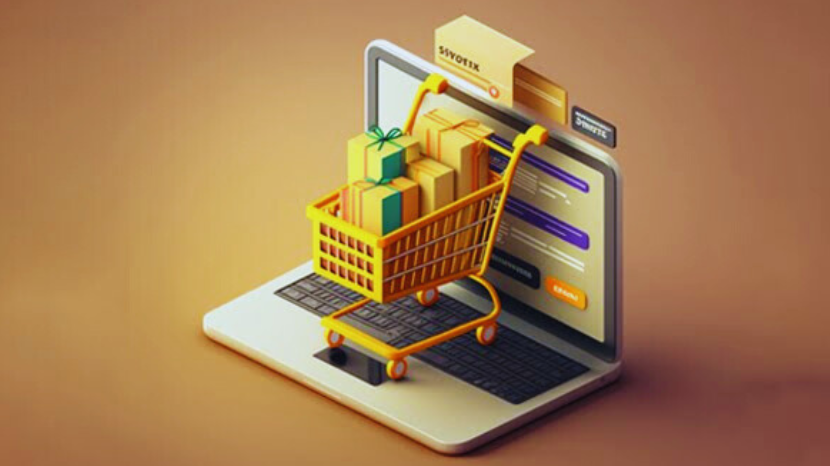
8. Offer Digital Products for Sale:
Just as meat is sold in the meat market, and clothes are sold in the clothing market, digital products have specialized markets. Ensure your digital product is offered in the appropriate market. Platforms like Picalica in the Arab region facilitate buying and selling various digital products.
9. Continuous Product Development:
Continuous success aligns with ongoing development. As soon as you abandon continuous product development, your product enters the decline phase of the product life cycle. People’s needs change, and competitors continuously innovate. Therefore, continually refine and develop your product.
Article Summary:
Digital products have sparked a massive revolution in the entrepreneurship world, enhancing opportunities for establishing business projects. Commerce is no longer exclusive to those with financial means; it has truly become a viable venture for all creative individuals with unique skills and ideas.
About

Lorem ipsum dolor sit amet, consec tetur adipiscing elit. Maecenas odio lacus, dignissim sollicitudin finibus commodo, rhoncus et ante.





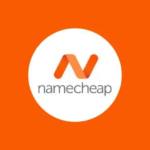
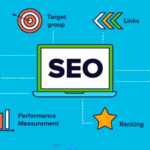
Leave a Reply